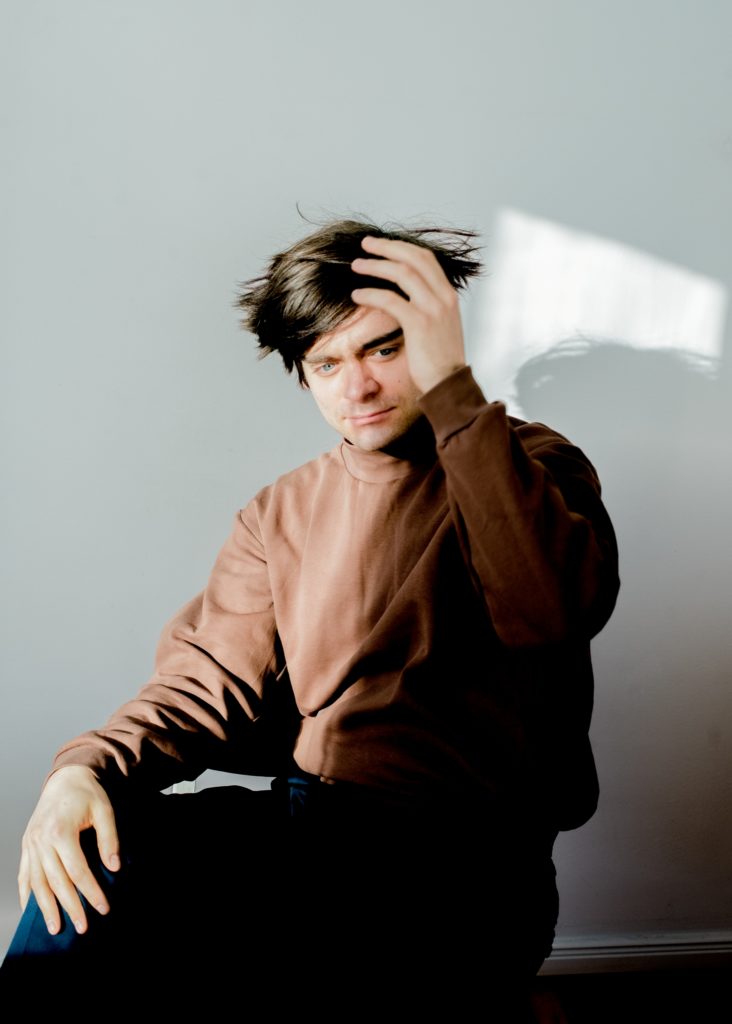
Max Eilbacher (born 1991 in Baltimore Maryland) works with sound. That work materializes in a variety of forms; compositions, musical performances, conceptual systems, perceptual choreography, installations, and theoretical sculpture. No matter how the final work may be categorized, the art typically utilizes speakers and sound waves. He studied film, animation, and computer music at university while maintaining an active touring schedule with a diverse range of projects, including the musical group Horse Lords, whose just intonation-based trance music exemplifies a modern response to the minimalist tradition. Max will be presenting his conceptual multichannel synthesis together with Phillip Sollmann at the upcoming CTM Festival in Berlin.
Can you talk about the relationship between sound and experience that is part of your work? Is something that comes to life when it’s experienced, lived through, in your opinion?
I hope the experience of my sound arises from the confounding space where the “you” and an “other” might have trouble verbally communicating the lived through experience. Simultaneously distancing and condensing that space, I’m creating a site built upon a questions like – Was that pretty? Was that annoying? What do I feel? Why was that ugly sound pleasant? What time is it?
Your work takes on various forms, from compositions, performances, conceptual systems, installations, sculptures. How does the experiential paradigm manifest in each of them?
Where does the listener, the audience, come to the equation?
We can’t listen collectively. We can point to the same references and half-heartedly agree on aesthetic qualifiers. I adore this paradoxical quality of working with sound. An audience enters into that admiration somewhere but only when they feel like they need to. Most of my studio work consists of listening to a few sounds with slight variations for a long while. Then, when I know people will be in the room, I have to combine them on a timeline in a way that I see as fitting to the context. If I let all of those sounds play at the same time it would be too short and everyone listening would loose any sense of meaning. But i if I let each sound play one after the other, the experience would be too long. An audience is a mental manifestation of the material at hand. So my notion of audience helps me think about pacing, how to design sound, and which event should follow which event.
Can you talk about your background? You were born in Baltimore, but now reside in Germany. Did you have a musical upbringing?
I grew up playing in noise bands in Baltimore where the ideal of a band was very loose. A band could be making sound with whatever was around, editing blown out video art or writing a play. Musicality was something I actively avoided until I realized music has to be about something. And that lack of a musical upbringing actually hindered the ability to convey that something. Regardless of concepts and meaning, having to become more musical while playing with Horse Lords over the past 15 years has made me understand that a musical vernacular can only aid in the creation of works concerned specifically with timbre and abstraction.
You’ve also been involved in the Baltimore band Horse Lords whose music favours just intonation inspired by the likes of La Monte Young and James Tenney, and which has established itself on the US DIY music circuit. Can you talk about your involvement in the band, and that particular scene, and also its development over the last 15 years?
Superficially, one would say your solo work and the work with the band sounds different, but in a way in your solo work, it is as if you were working with (psychedelic, hypnotic) minimalism in a more clinical way.
As a musician, in the traditional sense of being on stage with an instrument, I am very limited by how well I can stay in time. I’m not constrained in the same way when I create work as a solo artist. Things can go as fast or as slow as I want. Horse Lords and my solo work are very different forms that share concepts, concerns and orderings. In terms of my solo work, I think Buddy, the world’s greatest piano player said it very well, “short ideas, repeated, massage the brain.”
At the upcoming CTM Festival, you are collaborating with Berghain resident Phillip Sollmann on a conceptual multichannel synthesis project. Can you talk about it?
For the past year, Phillip and I have been working very intensely on an idiosyncratic method of digital synthesis. The way in which the system works has reshaped my understanding of the difference between a simple thing and a hyper complex thing; be that a musical structure, a timbral quality, or durational component. Our output has been quite varied and I am excited to share our results thus far! There will be a concert version for CTM and a long form installation version this February at the Neuer Aachen Kunstverein.
Photo: Kasia Zacharko